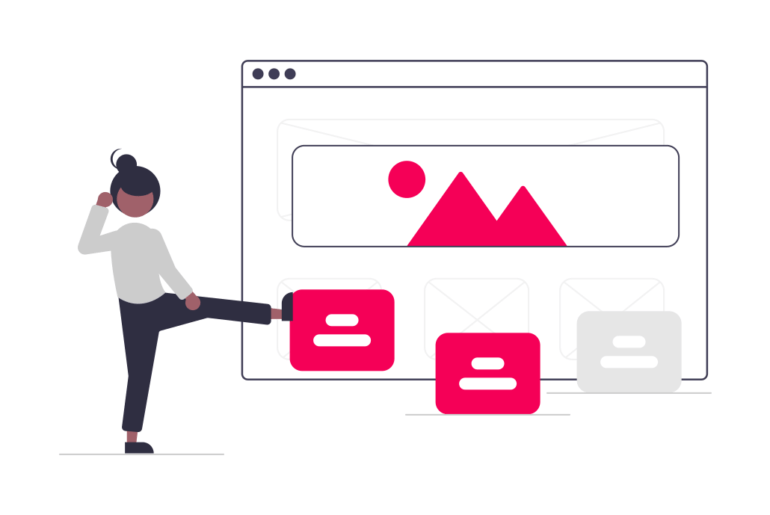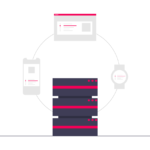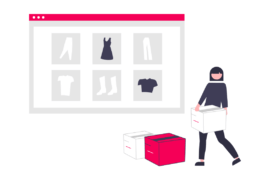Learn everything about ad trafficking and how it helps generate the highest potential profits for the publisher and the advertisers.
In the field of digital marketing, new demands (and hence new occupations) are continually emerging.
Digital marketing-related talents are in high order, yet there are now more professionals than available positions.
Digital ad traffickers, who went from nonexistent to some of the most sought-after experts in the field, are a wonderful example of this.
Do you, however, understand what a digital ad trafficker does?
What Is Ad Trafficking?
A digital ad trafficker, also known as an online ad trafficker, is in charge of creating and executing advertising campaigns on the Internet in order to boost brand recognition and accomplish marketing goals.
An ad trafficker’s primary responsibility is to purchase and convert high-quality traffic.
Since a successful ad trafficker needs to be highly knowledgeable in internet advertising and computer development, graphic editing, spreadsheets, and HTML, their professional profile is interdisciplinary.
Additionally, creativity and copywriting prowess are crucial.
Who Is an Ad Trafficker?
The person in charge of managing a specific ad campaign, typically with the aid of an ad server, is known as an “ad trafficker.”
In essence, an ad trafficker is a person who ensures that the process of ad trafficking is successful.
The goal of the ad trafficker is to increase impressions and, implicitly, clicks on a campaign by optimizing the ad procedures.
The ad trafficker often receives the creatives from the creative team and then works to determine and put into practice the most efficient way to launch the campaign.
Digital ad traffickers have only recently entered the market, but they are already indispensable to businesses and have given rise to various specialties.
- Ad trafficker with a focus on social media ads:
In high demand is this position. Its area of expertise is its advertising campaigns on social networks like Facebook, Instagram, LinkedIn, YouTube, and Twitter.
- Google Ads specialist ad trafficker:
This kind of ad trafficker concentrates on navigating Google Advertising’s complicated interface and all of its features, including search advertisements, shopping ads, and display ads.
- Ad trafficker with a focus on online shopping:
Since e-commerce relies on online activities to draw in and convert clients, online stores are a natural area of competence for ad traffickers.
- Ad trafficker with a focus on physical establishments:
Users frequently conduct online research before making an offline purchase, necessitating digital marketing efforts for physical establishments.
Ad traffickers that work with physical establishments must be aware of the specifics of the consumer experience.
- Advertising criminals specialized in selling informational goods:
Online courses and other informational products are growing increasingly competitive, so the function of the ad trafficker is essential to guarantee the product’s visibility.
Why Is Ad Trafficking Important?
Because it aids both publishers and advertisers in achieving their objectives, ad trafficking is crucial:
- Publishers want to get the most out of their advertising space while ensuring that advertisers get good results. Likewise, advertisers want their ads to be seen by as many people as possible.
- Processes used in ad trafficking have become more significant over time. The complexity of digital advertising and the increased competition in the advertising market are to blame for this.
Accordingly, it’s critical to optimize each step of the digital ad trafficking process.
How Does Ad Trafficking Work?
The creation of a media strategy and the readiness of a digital media campaign for activation are the objectives of the digital ad trafficking process.
The creative assets, trafficking instructions, ad server settings, and tag generation are a few elements required for this operation.
Teams from the creative team, media operations team, and ad operations are frequently involved in these components.
In some organizations, team members will overlap, but we can simplify the procedures by using the three groups mentioned above.
- The Creative Process
The creative team produces the creative elements (images, copy, etc.). These are loaded onto the ad servers or sent to the media team.
- Media Management
Once the creatives are finished, they are often sent to a media team in charge of carrying out the campaign. This entails adhering to a predetermined media strategy.
Several steps may follow, depending on the desired advertising strategies. For instance, placements need to be made and set up. Then, the ad server is pushed with the campaign and the placements.
Finally, the placements and campaign data are compared to the documentation of trafficking instructions.
At this stage, each ad placement in the trafficking guidelines is given a creative asset.
The media team gives the ad operations team the guidelines and the creative materials so they can implement them on the ad server.
- The Operations Process
The ad operations team completes the trafficking instructions, generates tags, and then sends them to media teams and publishers for integration into ad-buying platforms for activation.
How to Get Started with Ad Trafficking?
Knowing the advertiser’s end goals is crucial for maximizing the effectiveness of ad trafficking and making the most of it.
To create successful ad campaigns, ad traffickers, publishers, and advertisers must collaborate.
Therefore, it would be best if you abode by the guidelines listed below as an ad trafficker in order to acquire significant traffic and your planned growth:
- Step into the shoes of the advertiser
The ability to think like an advertiser is crucial for ad traffickers.
On the basis of that, you may decide together on the ad formats that are anticipated to raise the engagement rate of advertising and finalize them from the outset.
Additionally, you must discuss the CPM prices and ad placements to preserve clarity. This step’s completion enables the advertiser to establish a budget and choose the campaign’s course.
Last but not least, to determine the success of the ads, you must include and test aspects that can help you raise click-through rates. Here is a comprehensive tutorial on how to accomplish it.
- Keep Accurate Records of Results
Keep track of the outcomes of your efforts when it comes to programmatic advertising if you want to stand out.
As an ad trafficker, you must make sure that you maintain complete records of your work and the outcomes of it to get better at what you do.
Regarding ad placements and planning, it is advisable to keep notes on the requirements made by advertisers.
Then, you may defend the statistics when the ads are distributed and make better recommendations for their subsequent campaigns.
Since your performance will ultimately be evaluated, you should make it a habit to save copies of all instructions and results from reducing the likelihood of confusion when the results are received.
- Take Ownership
Although you play a significant role in your advertiser’s performance as an ad trafficker, you’re not the only one accountable.
This is because so many factors must come into play for an advertisement to succeed, including ad design, placement, media type, etc. So make certain your advertiser is aware of it.
Poor creativity will make it impossible to make an advertisement successful.
If you run into issues like these, get in touch with your advertisers and offer adjustments and factors that could impact how well the ads’ function.
The advertiser and creative team must support you to maximize an advertisement’s effectiveness.
- Enhance Your Knowledge
Technologies in the field of programmatic advertising are constantly evolving. It is your duty as an ad trafficker to take the initiative and adjust to this development.
You’ll need to connect with various creative people, such as designers and copywriters, comprehend their perspectives and learn advertising fundamentals.
The latest developments can also be learned by visiting digital technology seminars and networking with like-minded individuals through social media. So learn for yourself and make learning new things a habit.
Do’s and Don’ts of Ad Trafficking:
Ad trafficking can flourish or fail like anything else in the digital and marketing world.
Here are some pointers on what you should and shouldn’t do to maximize the effectiveness of your campaign.
Do’s:
- Unless otherwise specified, schedule the delivery of advertising consistently for the whole campaign.
- Take screenshots, then send them to the advertiser or agency. They will feel more assured that their campaigns are being handled.
- Follow and assess a campaign’s performance and provide recommendations for performance improvement.
- Verify that the line-item data and ordering match the IO (insertion order) (naming conventions, line-item values, CPMs, creative, etc.).
- Before reserving any campaigns, check the inventory.
- When managing numerous indirect partners, specifically, double-check priorities and campaign specifics.
- After the start of the campaign, compare the delivered data with the ad server.
- Verify that the creative assets adhere to the requirements by checking them. In addition, the advertiser should have authorized the inventive elements, which should be pertinent to the campaign.
Don’ts:
- Keep a campaign from using “auto-pilot.”
- Without a new IO, avoid revisions and optimizations.
- Serve no third-party tags without first testing them.
- Before usage, ensure all creative materials are in accordance with the specifications.
- When building up a campaign, please avoid using workarounds like grouping line items or orders because, occasionally, they can backfire.
- Wait to put optimizations into practice before acquiring permission.
- Only create a pop-up or interstitial after first setting a frequency cap.
Ad Trafficking vs. Display Trafficking: What’s the Difference?
Ad trafficking and display trafficking are not the same things, even though people frequently use them interchangeably.
Ad trafficking is the practice of building advertising campaigns through the use of technical elements, such as putting up links for tracking, ensuring ad placement, gathering, and utilizing creatives, etc.
An ad server or advertising platform is used to carry out ad trafficking. There is no set format that the procedure must follow.
On the other hand, display trafficking entails the placement of banner ads on websites.
Creative companies produce display advertising commercials, which are planned, positioned, and carried out as campaigns to get the desired ROI.
After covering the fundamentals, you need to be aware that neither publishers nor advertisers are looking to hire someone solely to set up advertising.
Ad servers, SSPs, DSPs, Trade desks, ad exchanges, ad networks, etc., must all be thoroughly understood by you.
Take the initiative, work diligently toward the objectives, and stay current with ad tech.
The Conclusion
A more extensive method of controlling digital ads is provided by ad trafficking in the complex world of internet advertising.
Although it complicates the campaign planning process, it allows advertisers to make the most of their efforts and maintain relevance in the always-changing digital market.
Publishers are better equipped to satisfy the demands of their demand-side partners when they are aware of the motivations behind the ad trafficking process.
Frequently Asked Questions
Creating and managing a campaign to display adverts on a website or mobile application is known as ad trafficking.
A dedicated ad ops team within a business, the website’s originator, publisher, or both can handle it.
Ad trafficking involves more than just getting an advertisement to run; it also entails getting the campaign to operate as efficiently as possible, generating the highest potential profits for the publisher and the advertisers.
The advertiser is positioned at the top of a stack of hierarchical tiers in the Campaign Manager platform. An advertiser may run multiple campaigns to illustrate various tactics.
Your objective at the campaign level is to traffic your media strategy to create Placement Tags that you can then give to the Publishers who will deliver your ad inventory.
The objects contained in a Campaign are described below and listed in the campaign hierarchy in which they appear.
The characteristic of sponsored traffic is that it originates from paid promotions or adverts, such as Google Ads or Facebook Ads. Organic, direct, and referral traffic are additional types of online traffic.

Shubham is a digital marketer with rich experience working in the advertisement technology industry. He has vast experience in the programmatic industry, driving business strategy and scaling functions including but not limited to growth and marketing, Operations, process optimization, and Sales.







